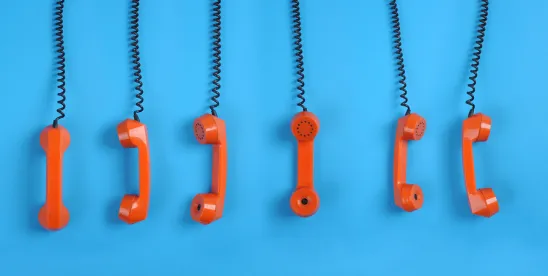If you’re looking for a short TCPA certification ruling packing a big punch you’ve come to the right place.
As the seesaw battle over whether wrong-number TCPA class actions are properly certified continues, one of the biggest areas of dispute is the reliability of carrier records to identify users of cell phones. The Defense position—undoubtedly the correct one—is that the carriers lack records of users of cell phones and, therefore, it is impossible to identify wrong number call recipients by merely matching names associated with a caller’s account to subscriber information for cell phones available from the carriers. There will be a huge rate of false positives—and now we know just how huge (but more on that In a second.) Plaintiffs try to surmount this hurdle in one of two ways: i) arguing (falsely) that the carriers do have “user” information; and ii) proposing to send notice of the class to the subscriber of shared plan and seeking self-identifying affidavits from claimants establishing they are class members.
The use of these self-identifying affidavits has become a huge area of dispute with cases going both direction all across the country. (What a surprise in TCPAWorld.) Well, in a new decision handed down on Monday the Court in Sandoe v. Boston Sci. Corp., Civil Action No. 18-11826-NMG, 2019 U.S. Dist. LEXIS 183886 (D. Mass. Oct. 23, 2019) gave a big boost to the Defendant’s arguments that the use of those affidavits is improper. Perhaps even more importantly the Court explained that such a high percentage of cell phone users are on family plans these days that certifying one of these wrong number cases is just about impossible.
First, on the use of affidavits to identify class members:
Defendant has a right to challenge, and has expressly stated its intention to do so, any submitted affidavits purporting to self-identify as class members on the ground of Consent. As a result, the challenged affidavits would be inadmissible and each of the thousands of putative class members would be subject to cross-examination at trial.
As the Defendant would be free to challenge the assertions of each individual class member contending that they received a wrong number calls, the Court found that the class members were unascertainable using an administratively feasible method, and common issues did not predominate over individualized issues of consent. On the predominance piece the Court was moved by an expert report indicating that 75% of households are on a shared or family cell phone plan:
75% of cell phone carrier plans are friends and family plans meaning that a single subscriber is associated with multiple phone numbers. The individual users of the associated numbers sometimes do and sometimes do not share a last name with the subscriber. As a result, defendant has a unique potential consent defense against every proposed class member, and, for the reasons discussed above, plaintiff cannot rely on affidavits to establish lack of consent.
That’s a huge ruling. Only in 25% of cases will subscriber data be useful in identifying whether an a call to a specific account holder went to a wrong number. It remains to be seen whether the Plaintiff’s bar will adjust and start limiting their class sizes to data sets where the phone plan is not a shared plan but, for now, the reasoning in Sandoe seems to torpedo most, if not all, TCPA wrong number class actions for a very simple reason—the folks regularly using the phone are likely the consenting customer receiving the calls at issue. So just because the caller is not trying to call the subscriber says nothing about whether or not the call is legal or illegal. That means no commonality and no certification.
Have a good weekend TCPAWorld.




 />i
/>i